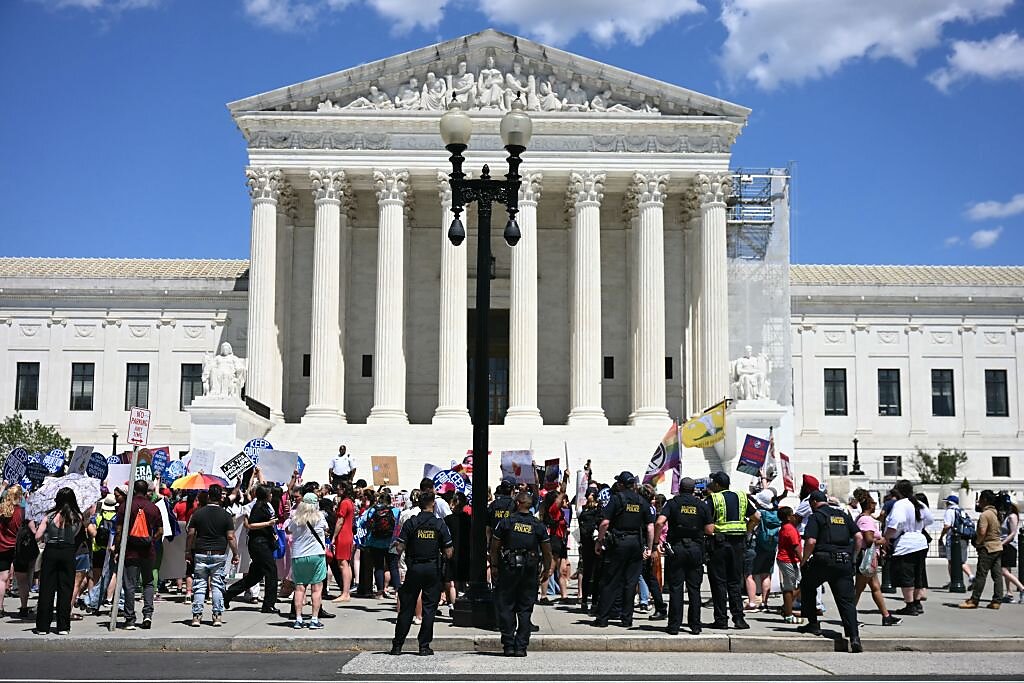The government can’t command social media platforms to remove disfavored speech. But when does informal government speech notifying or suggesting cross the line into unconstitutional pressure or coercion? We still don’t know, because today, the Supreme Court reversed and remanded the Fifth Circuit’s decision in Murthy v. Missouri, rejecting the much-watched jawboning case for lack of standing.
Vaccine-skeptical doctors, supported by the states of Louisiana and Missouri, sued the Biden administration and various federal agencies over government exhortations to platforms to do more about COVID-19 misinformation. The court found that plaintiffs failed to plead a concrete injury caused by government pressure and redressible by the court. While facially a setback to efforts to prevent government censorship by proxy, the court’s decision sets future jawboning litigation on the right precedential track and showcases the pressing need for legislative action to impose disclosure on government communication with social media platforms.
While the court has not done away with social media jawboning today, it has set the stage for its end, and an end on ultimately speech-friendly terms. In NRA v. Vullo, decided at the end of May, the court found impermissible jawboning in the demands of a NY state banking regulator by applying the Bantam Books v. Sullivan standard. Relying on Bantam Books, it held that the government violates the First Amendment when it is “reasonably understood to convey a threat of adverse government action in order to punish or suppress the plaintiff’s speech”. Alito’s reliance on Bantam Books in his Murthy dissent indicates that the standard for finding social media jawboning is coming into focus.
Although Justice Barret does not explicitly rely upon Vullo or Bantam Books when delivering the opinion of the court, she puts the Fifth Circuit’s loose “significant encouragement” standard half-pulled from Blum v. Yaretsky to bed. Coupled with Alito’s decision to use Bantam Books and Vullo rather than attempt to resuscitate the Fifth Circuit’s Blum standard, Barrett’s approach indicates that jawboning cases will be decided around coercion rather than the significance of encouragement.
What remains to be decided is exactly how coercive government communications must be to violate the Constitution’s strictures. Vullo turned in some sense on the believability or actionability of government threats, a less important aspect of Bantam Books, but under either variation of the coercion standard, a clearer, smaller case is likely to bring justices Barrett and Alito together.
The real hurdle is standing and redressability, or how establishing standing and redressability shapes the sort of coercion the court is willing to address. The court must be able to offer a remedy likely to prevent future harm to plaintiffs. The injunction at issue here was deemed unlikely to do so given the loose connection between government communications and platform action.
“[W]ithout evidence of continued pressure from the defendants, it appears that the platforms remain free to enforce, or not to enforce, those policies—even those tainted by initial governmental coercion.”
Thus, in social media jawboning cases, standing and redressability effectively create a shadow requirement that coercion be directed toward particular speakers, and ongoing or likely to persist. Absent a clearer, longer term pattern of demands, the attenuation of plaintiffs injuries make it unlikely that an injunction targeting government officials will spur platforms to undo past content policy decisions. The fact that Facebook had limited some of the plaintiffs’ content before being jawboned seemed to weigh heavily on the court’s judgment. Unfortunately, even if a one-off demand shapes platform policy for everyone, these lingering effects won’t be captured by a single plaintiffs’ discovery of how the demand affected them.
From a standing standpoint, it is a problem that most plaintiffs were not named in the most obviously coercive communications. But these messages, sent privately by White House Communications Director Rob Flaherty and advisor Andy Slavitt, were unlikely to have been uncovered without the participation of such a wide set of plaintiffs. Nevertheless, the bevy of plaintiffs, claims, and potentially affected government agencies at play in the case always cut against a full hearing on the merits. Hard cases may make bad law, but too-large cases often make no law at all.
The court’s decision leaves obvious room for platform litigation, or mere participation in litigation around the issue. A suit by platforms would obviate the attenuation problem. For a social media firm, even a single, general threat may create expectations of direct future government retaliation. Such a pleading would be much more in line with Bantam Books, which was brought by publishers with longstanding commercial relations with the coerced distributor, who while not party to the suit, testified that he had stopped carrying the plaintiff publishers’ books in response to government threats. Even a small platform might be able to show a much more direct and redressible injury.
Ultimately, the court’s decision to reject Murthy for lack of standing lays clear the pressing need for disclosure of government communications with social media platforms. If bundled claims and the inchoate or general demands uncovered by state plaintiffs’ discovery and congressional fishing don’t pass muster, then more granular, regular reporting will be required to link government requests to platform action and lay bare the “continued pressure” the court requires.
Andrew Grossman and Kristen Shapiro have detailed the case for such a bill in a Cato Briefing Paper titled “Shining a Light on Censorship: How Transparency Can Curtail Government Social Media Censorship and More,” and I have published a corresponding model bill text. This approach remains the best way to discourage and discover jawboning, and in light of Murthy, the best way to ensure that future jawboning victims have the standing they require to prevail in court.

